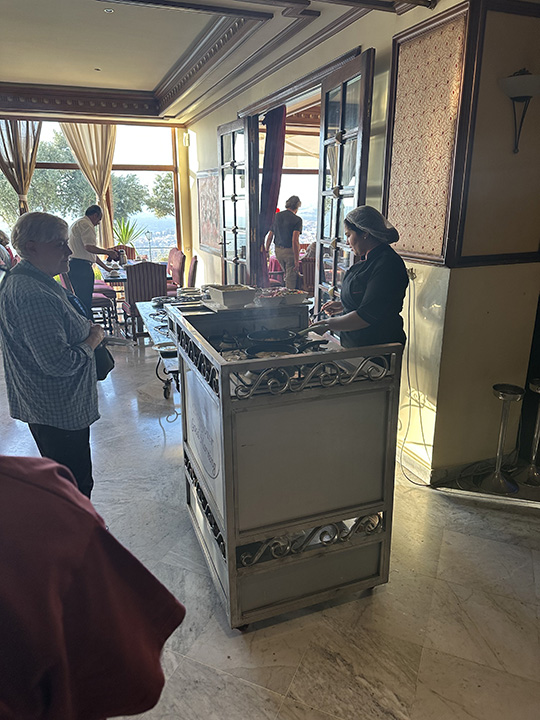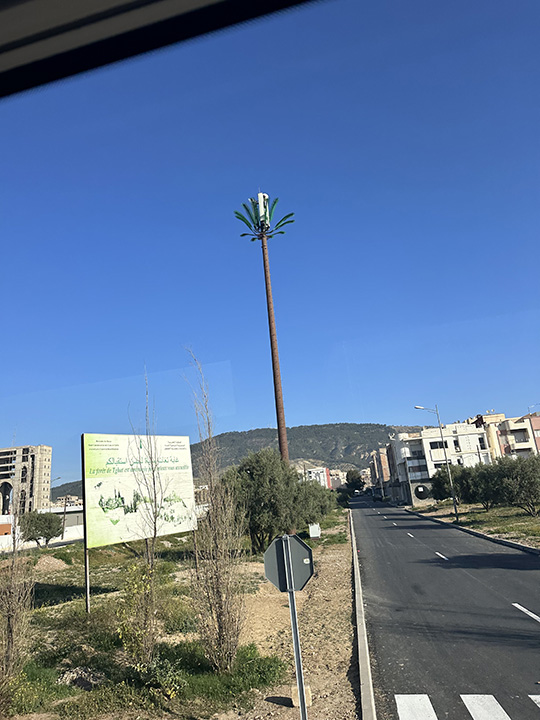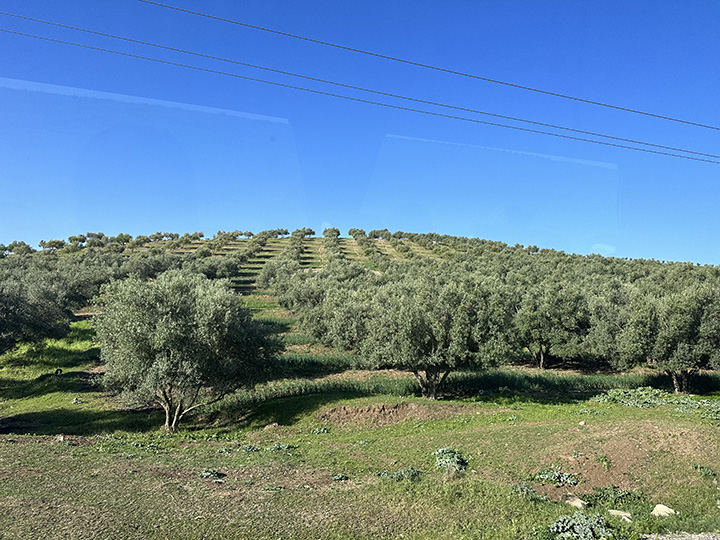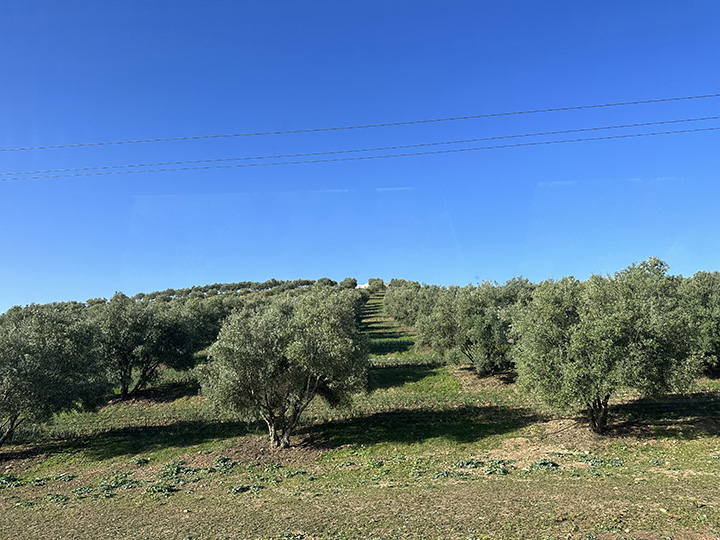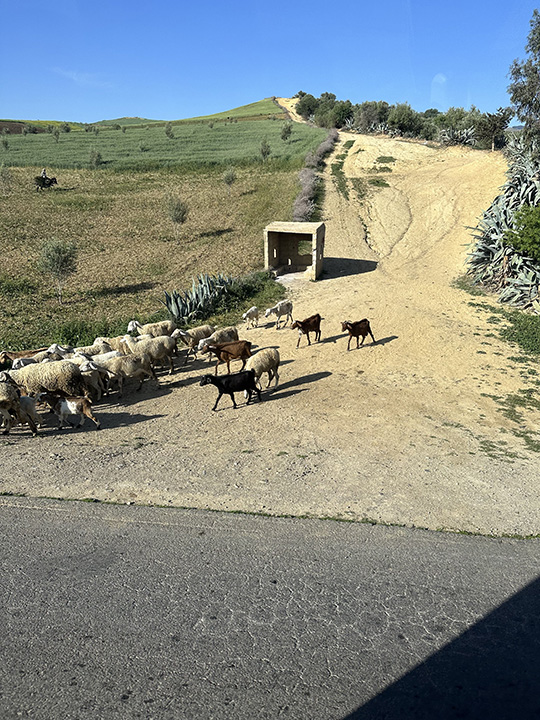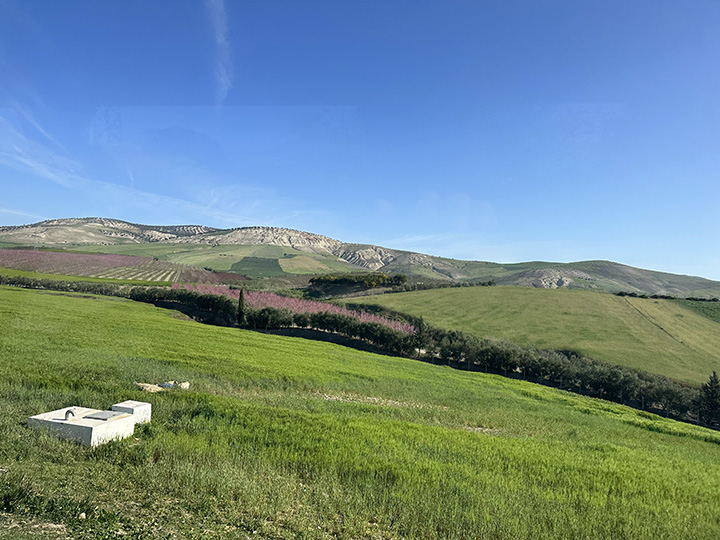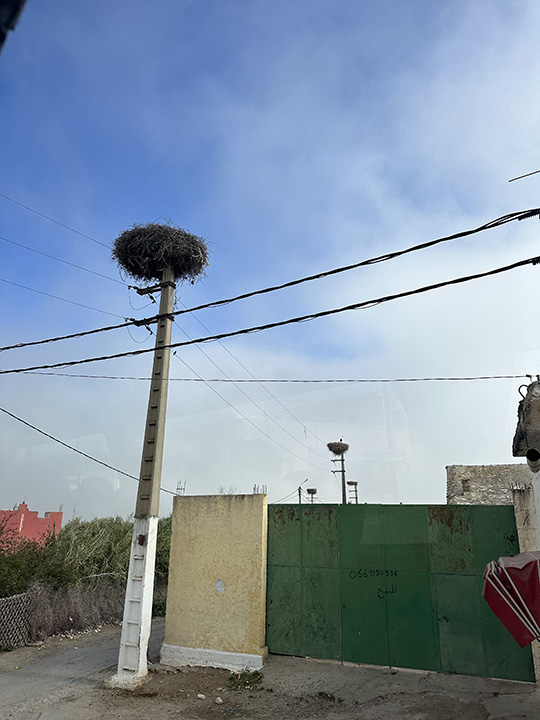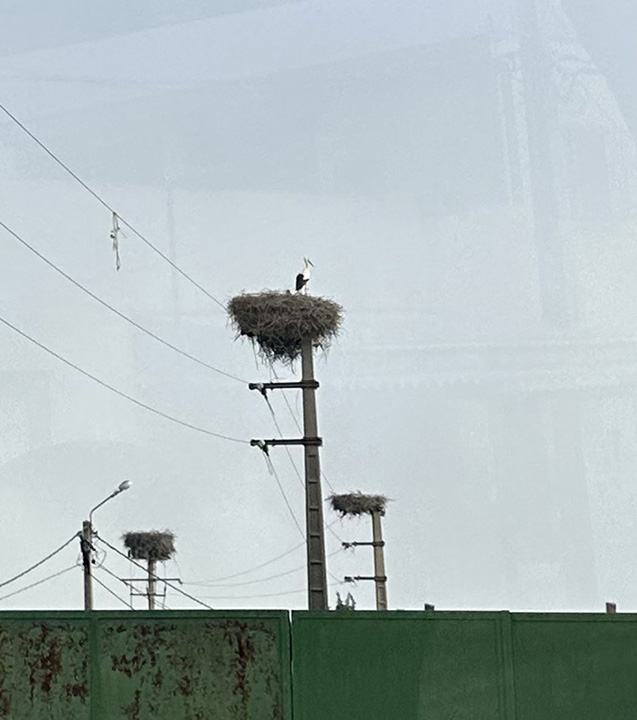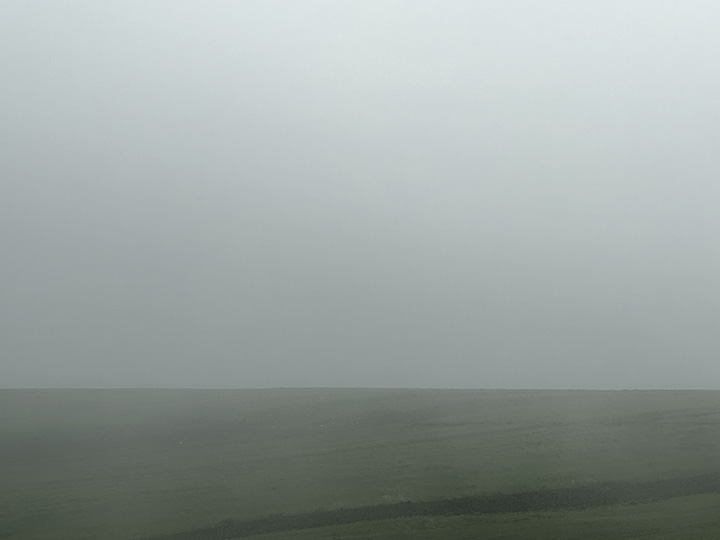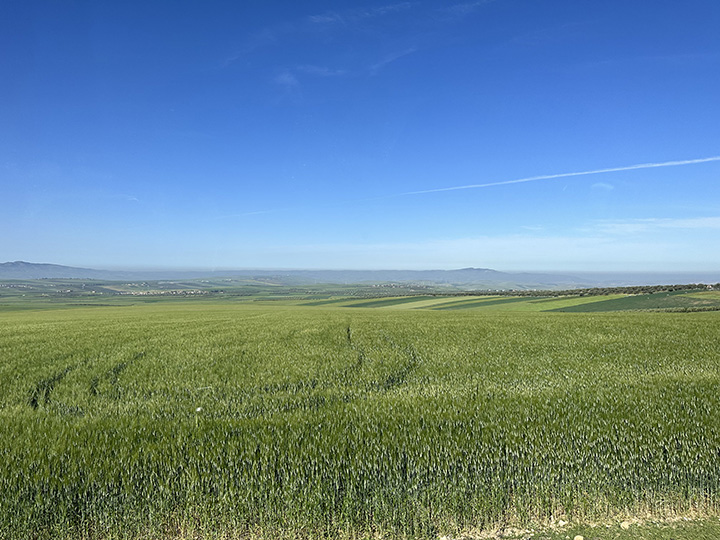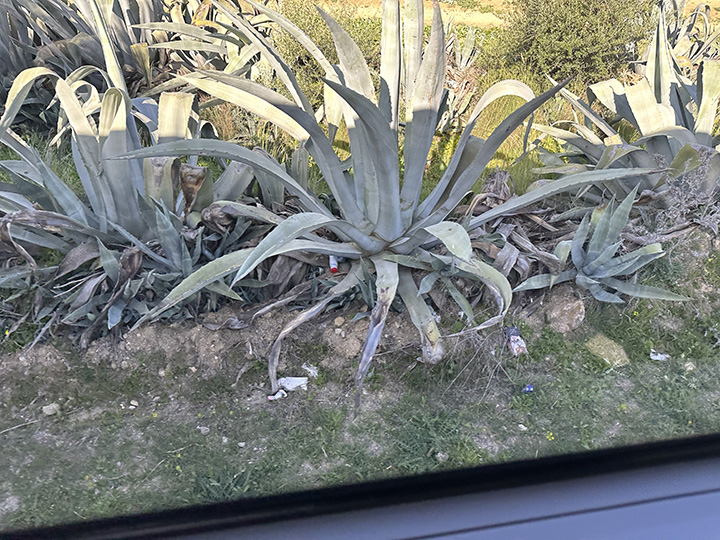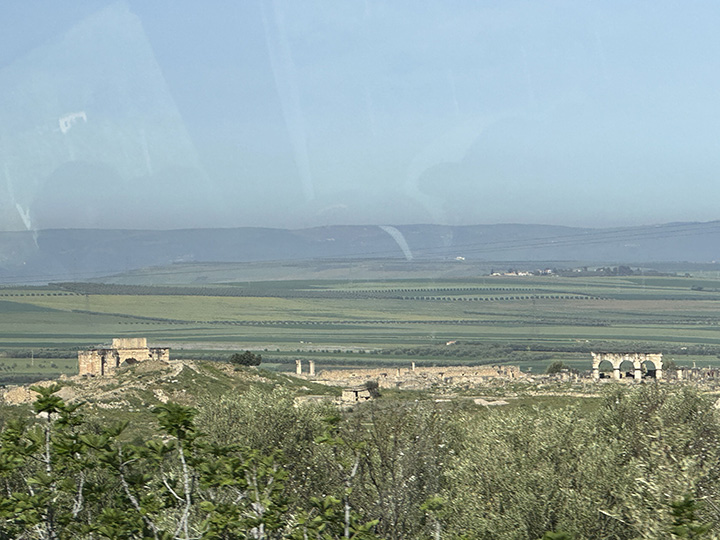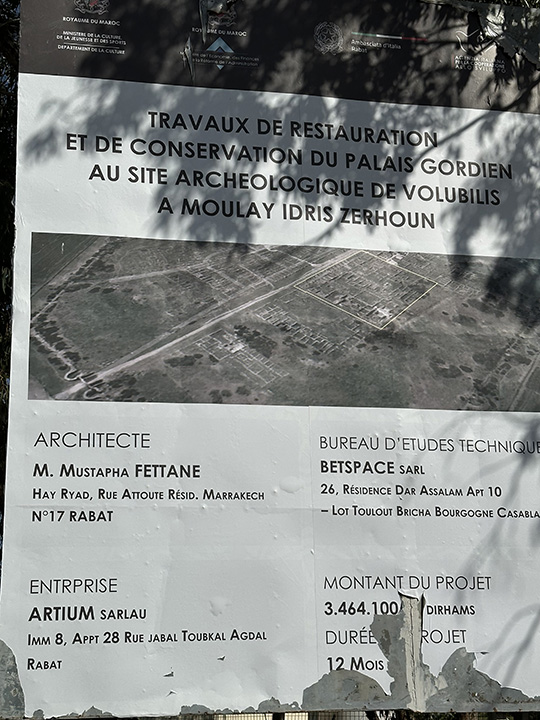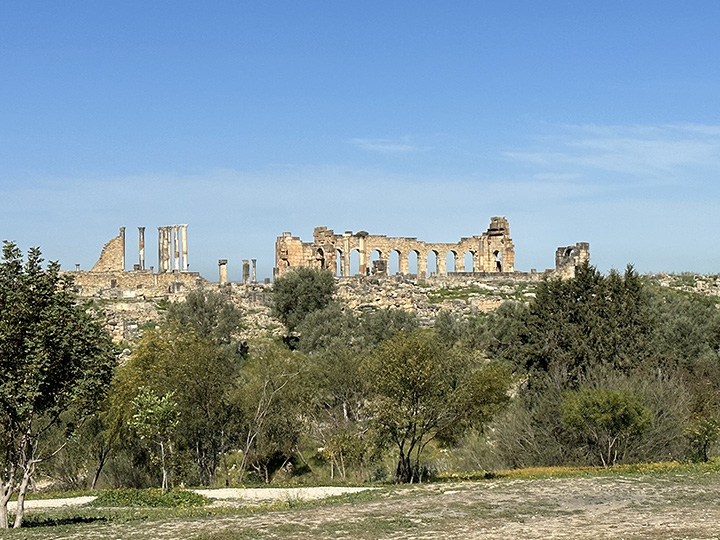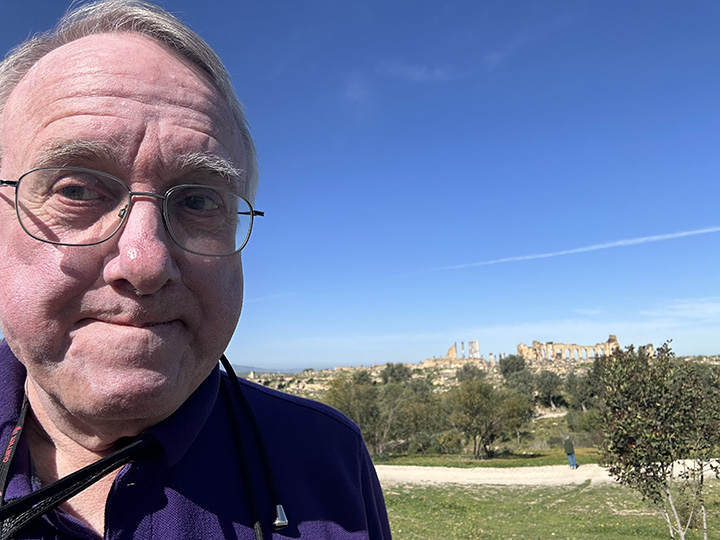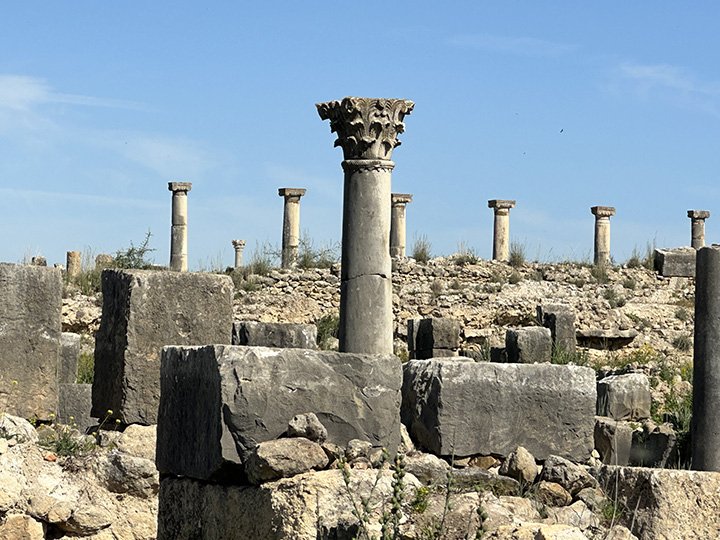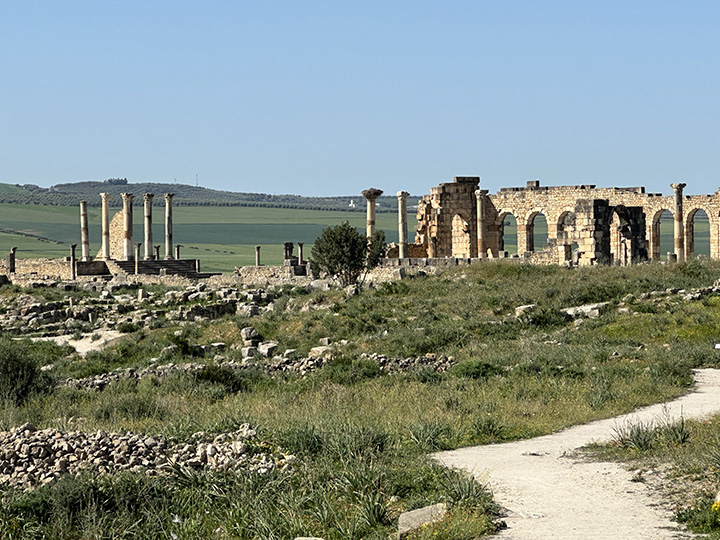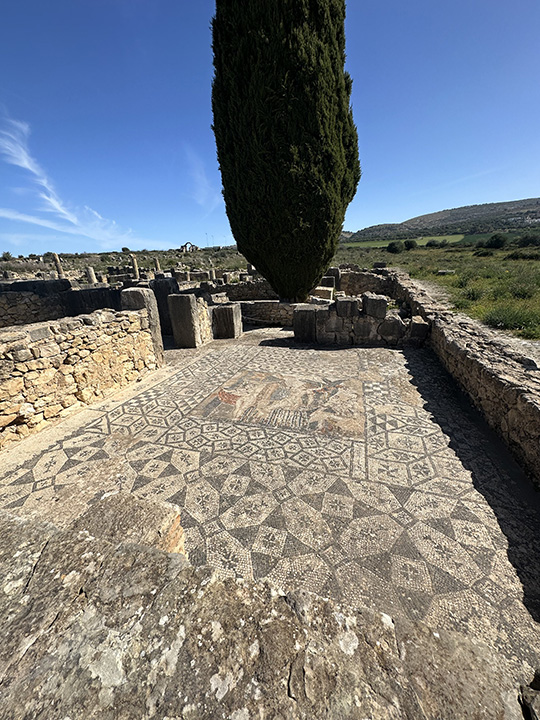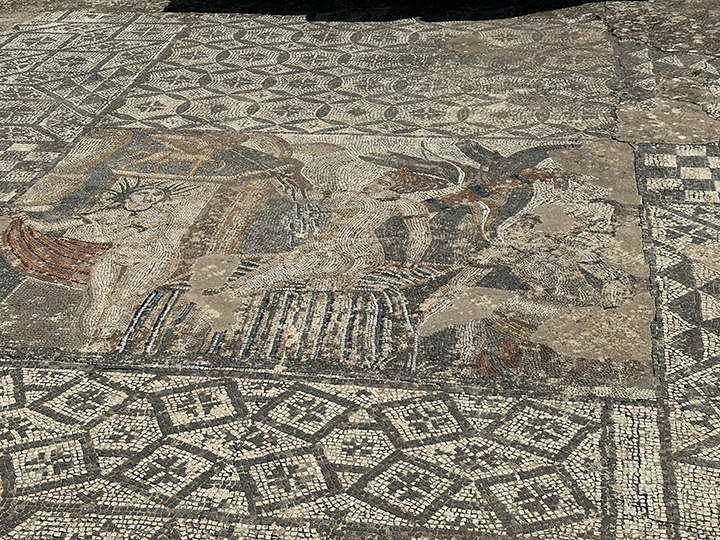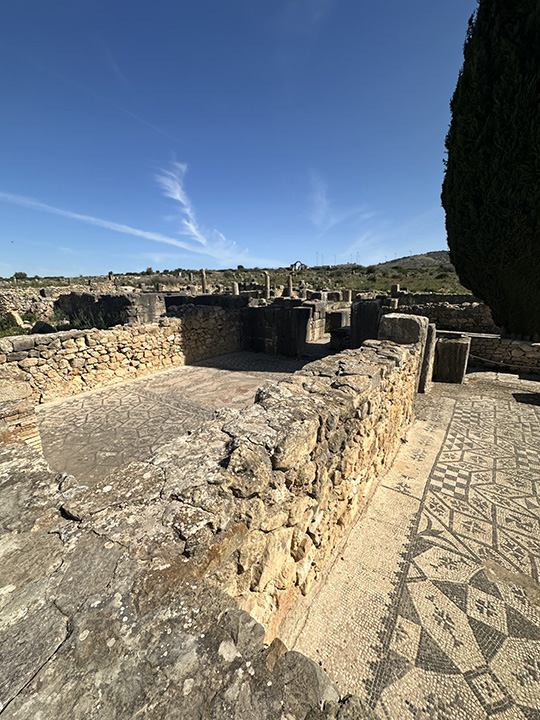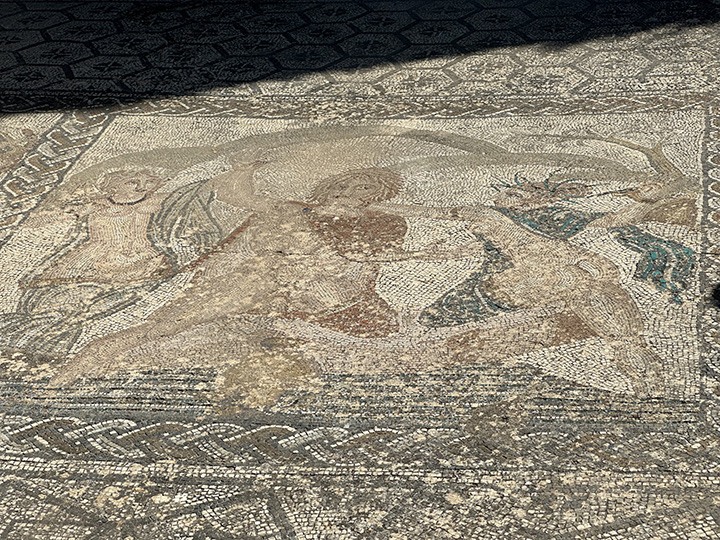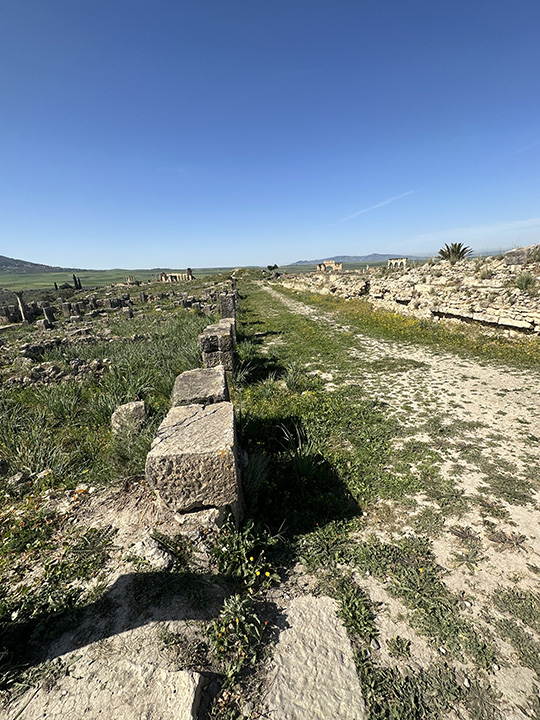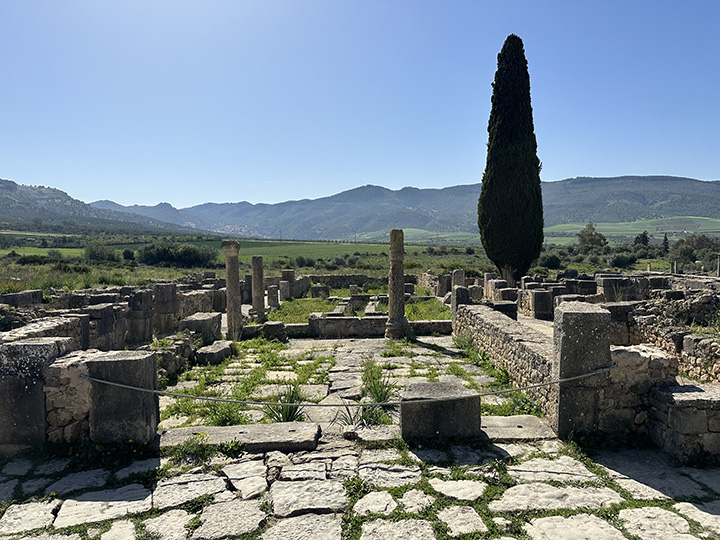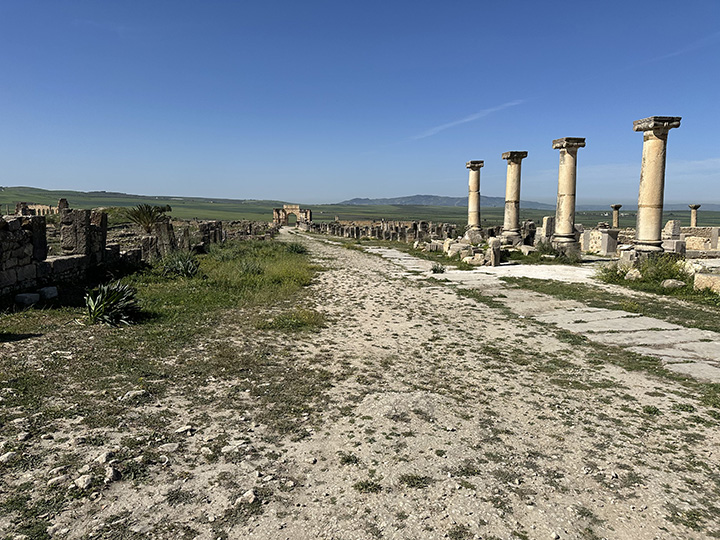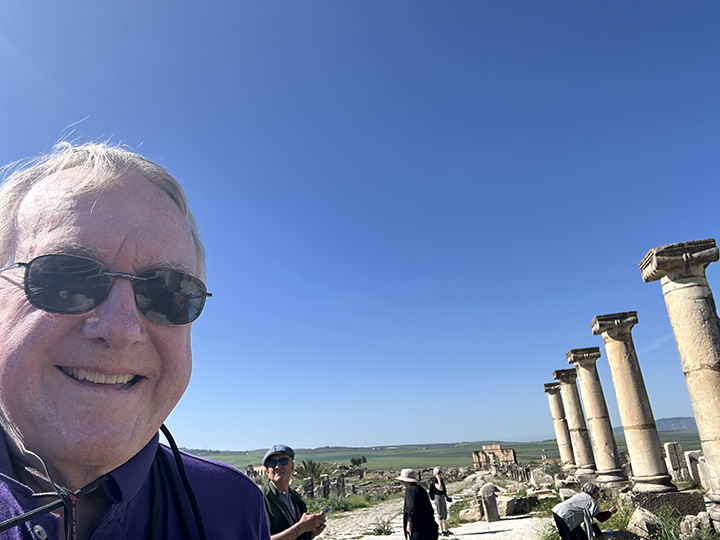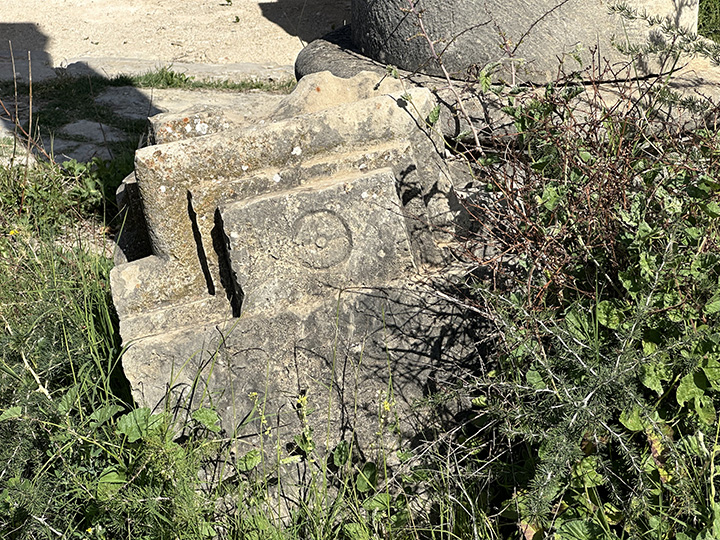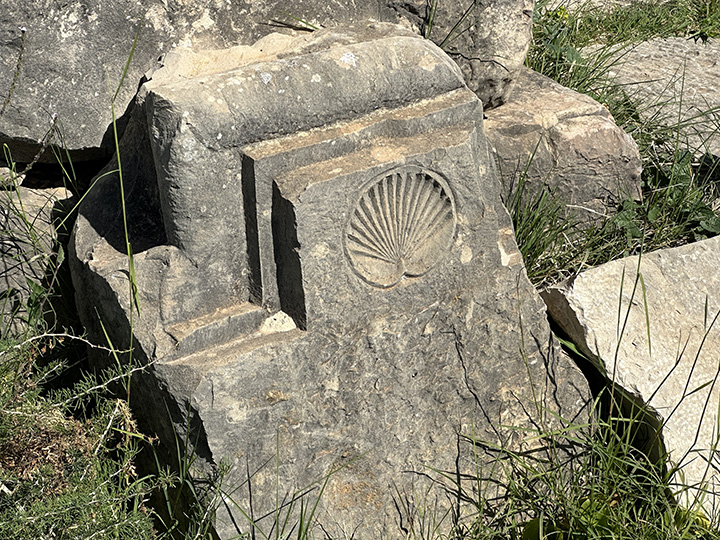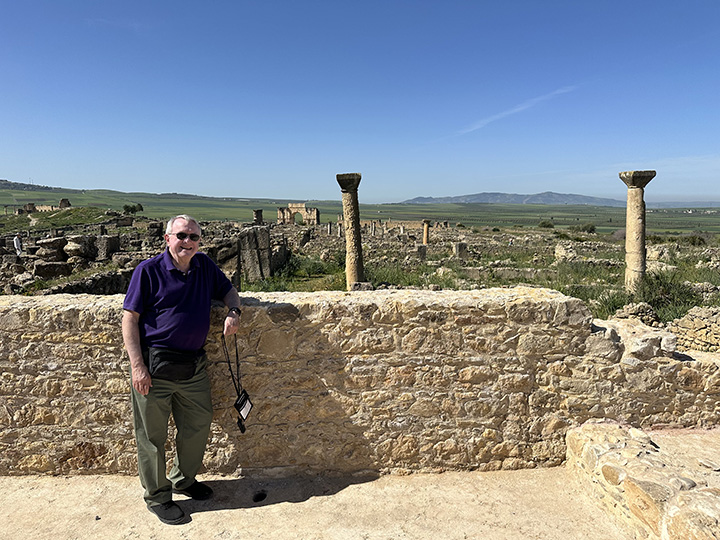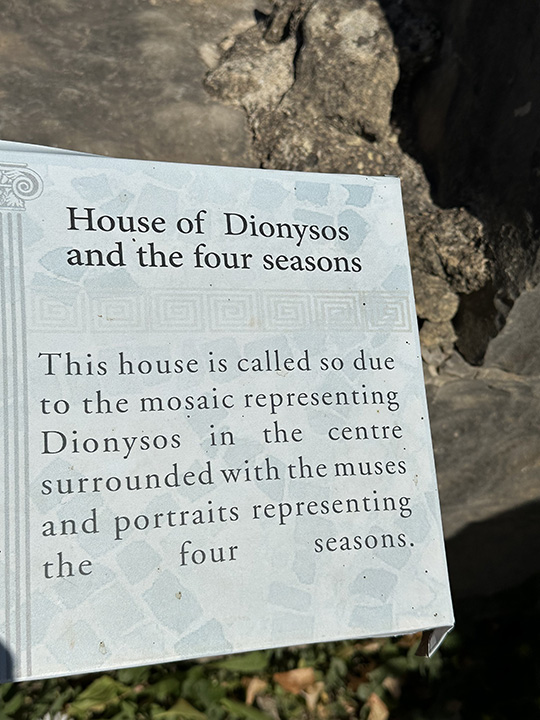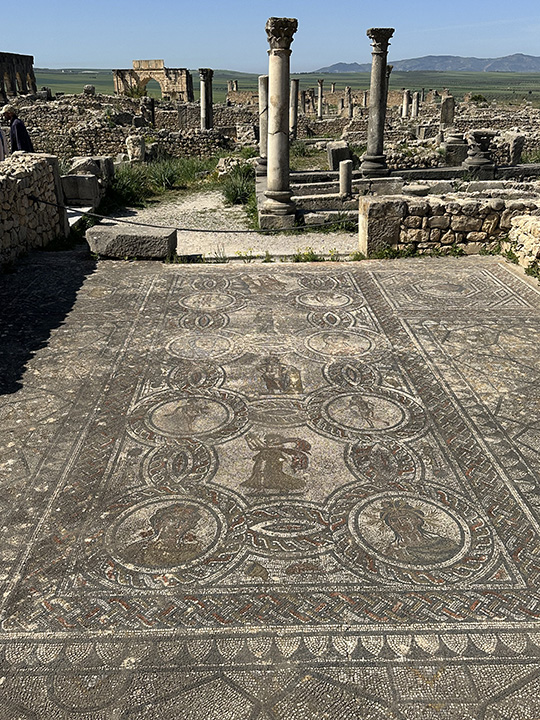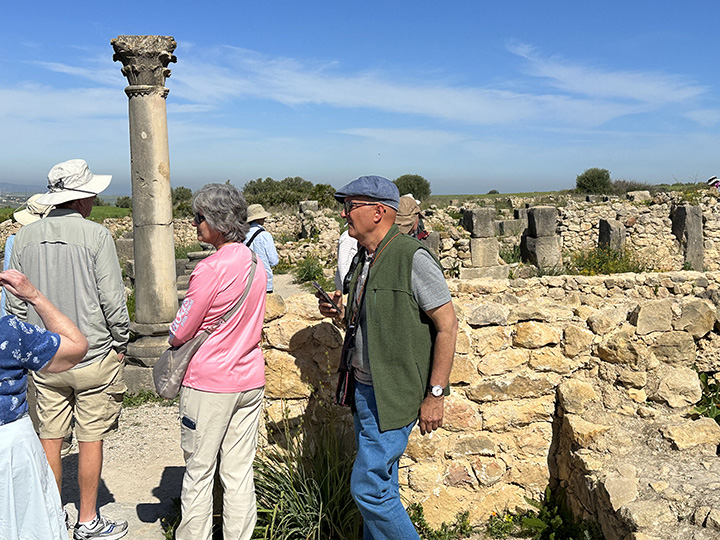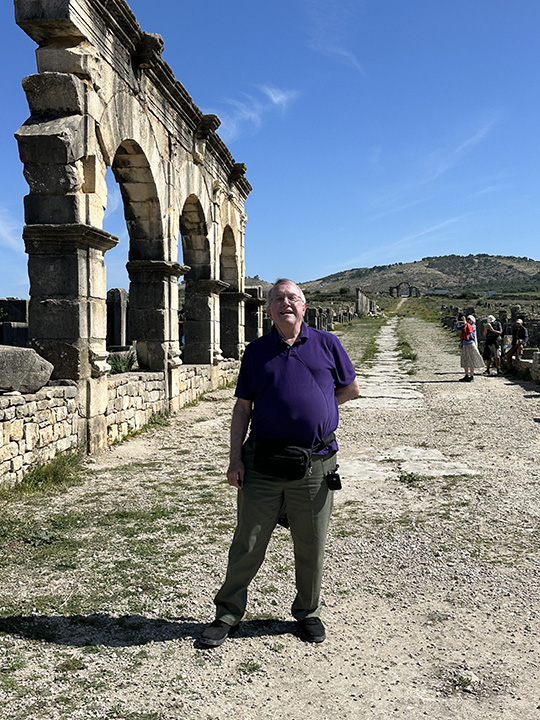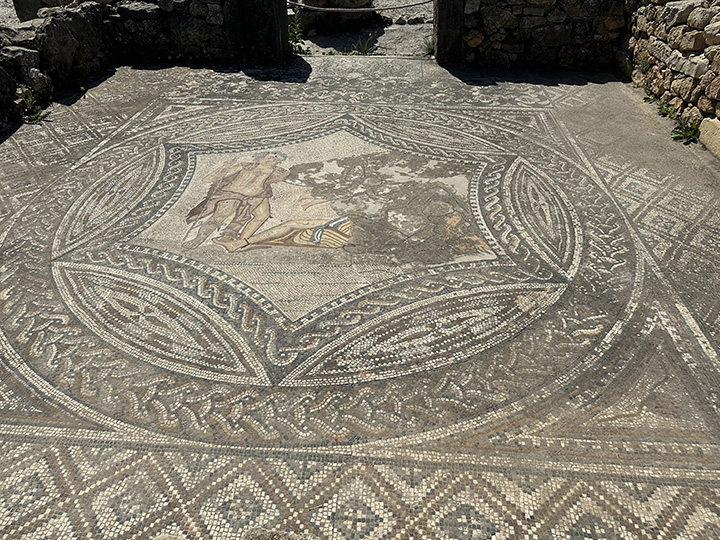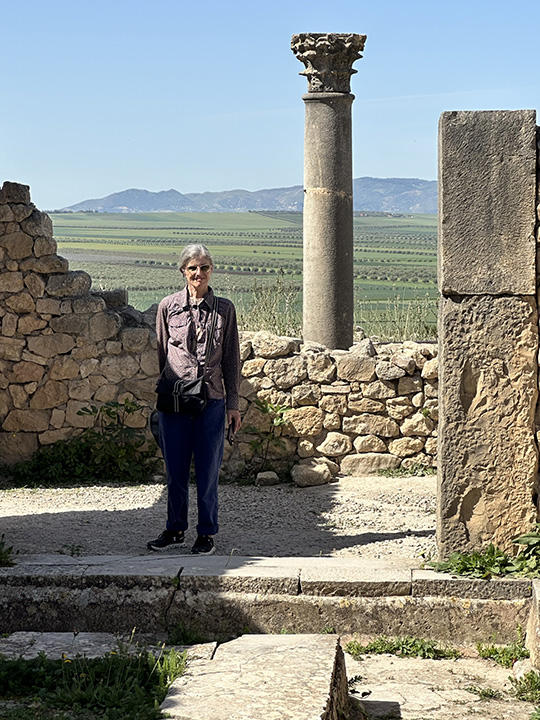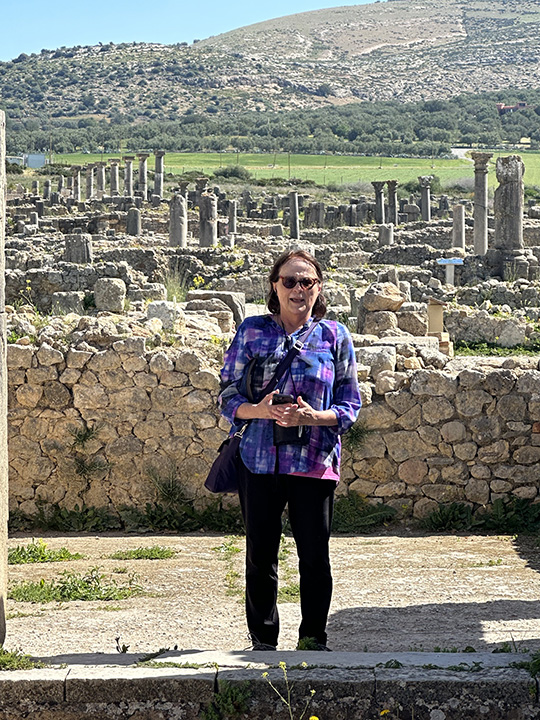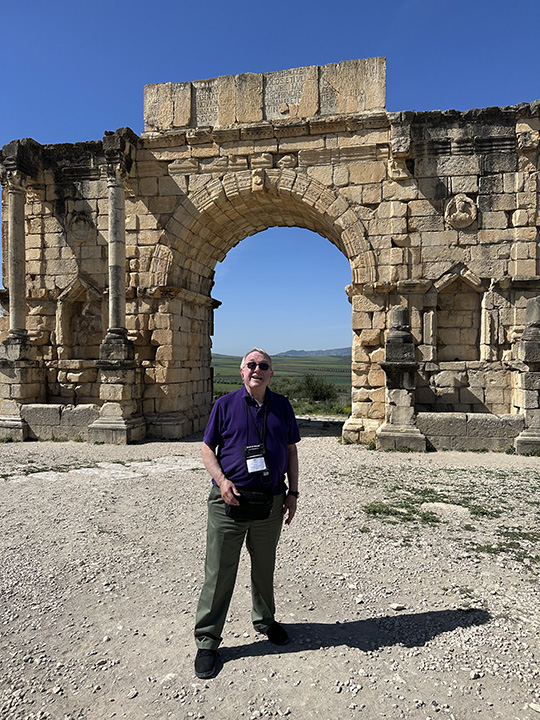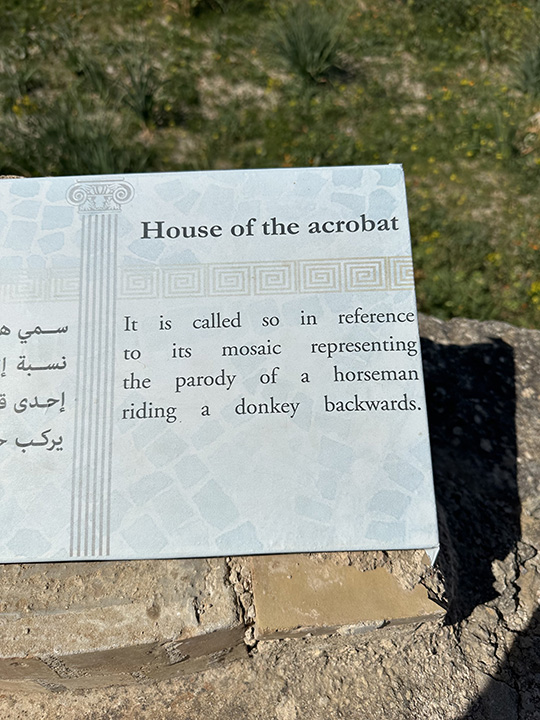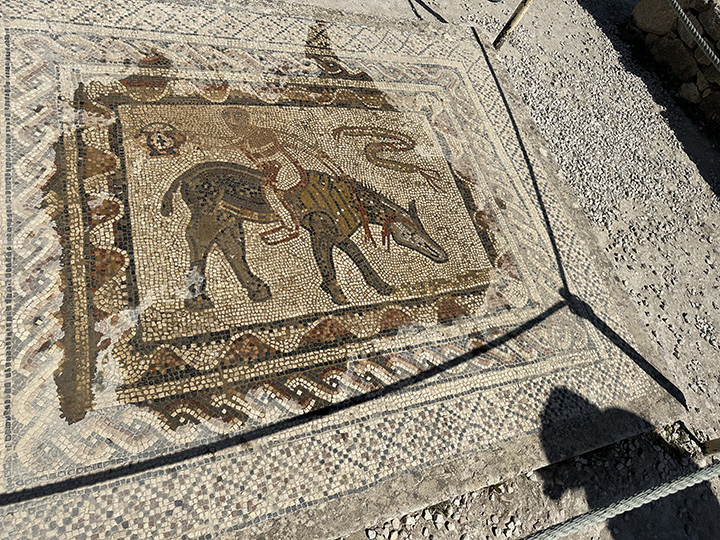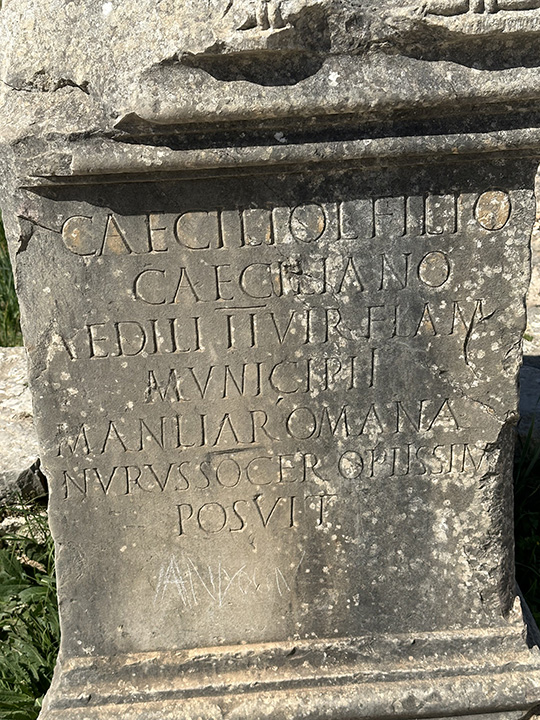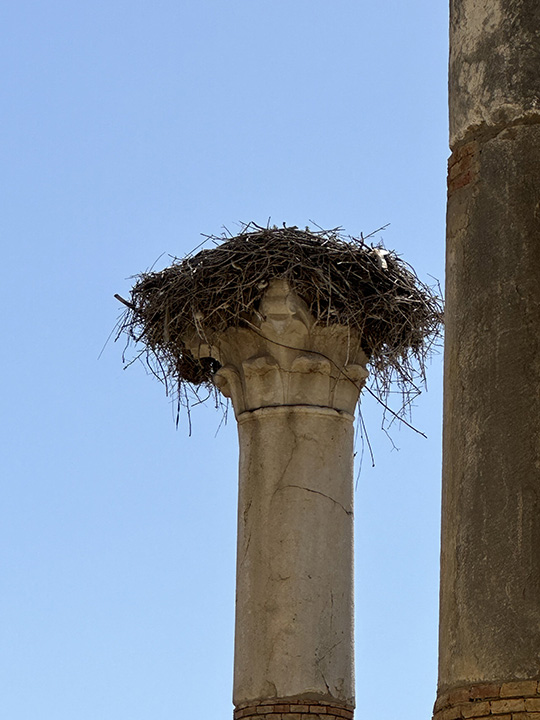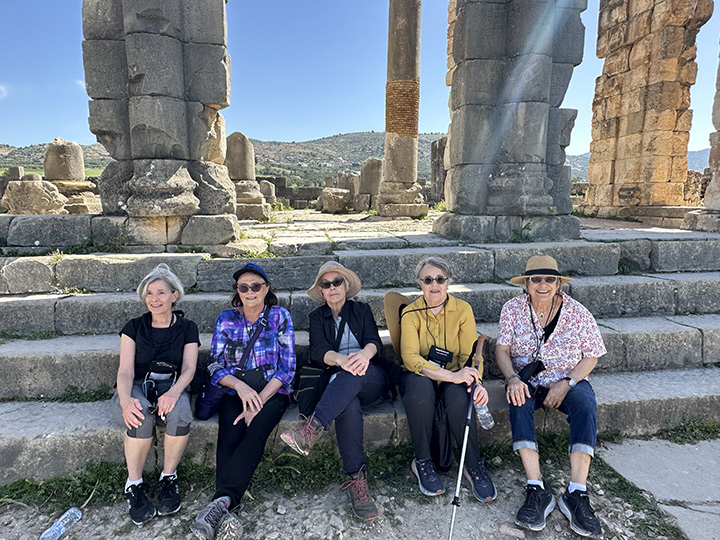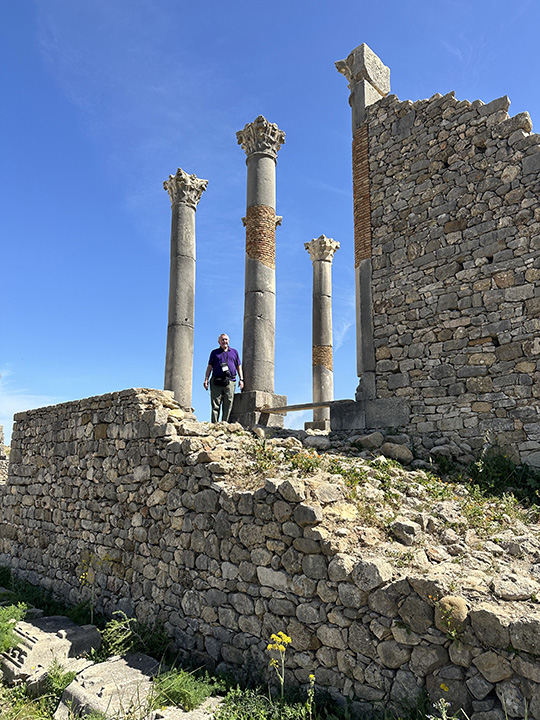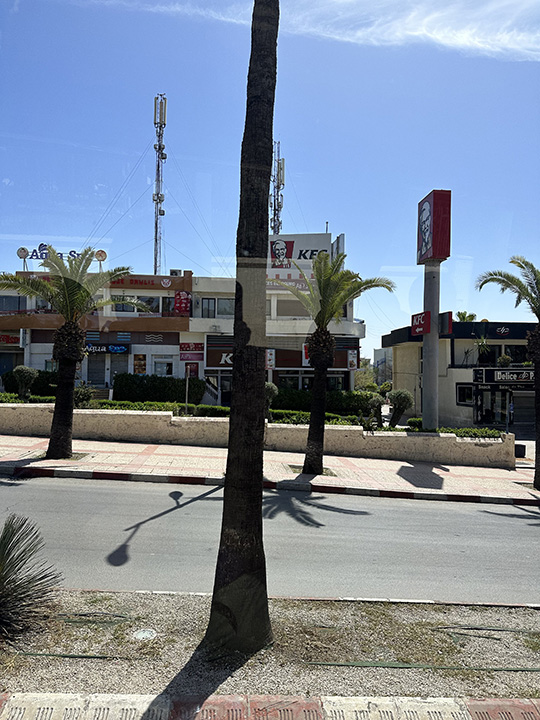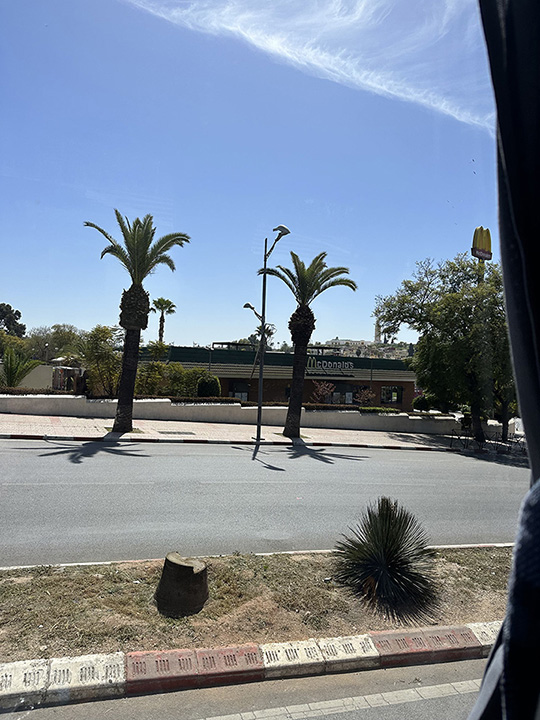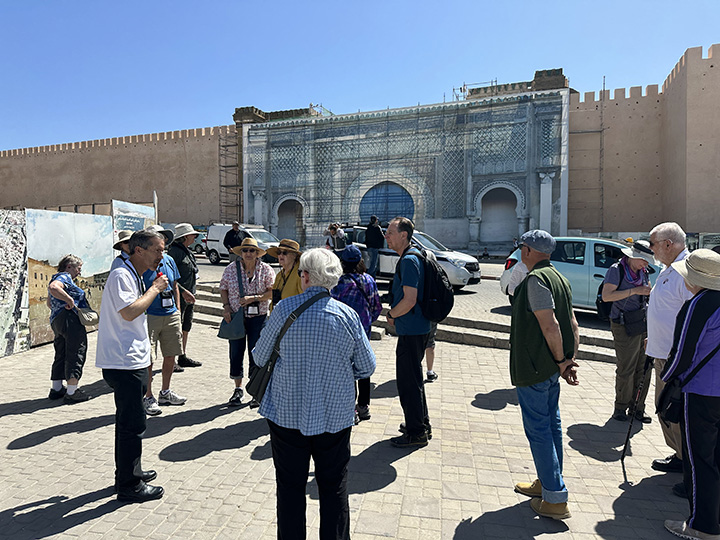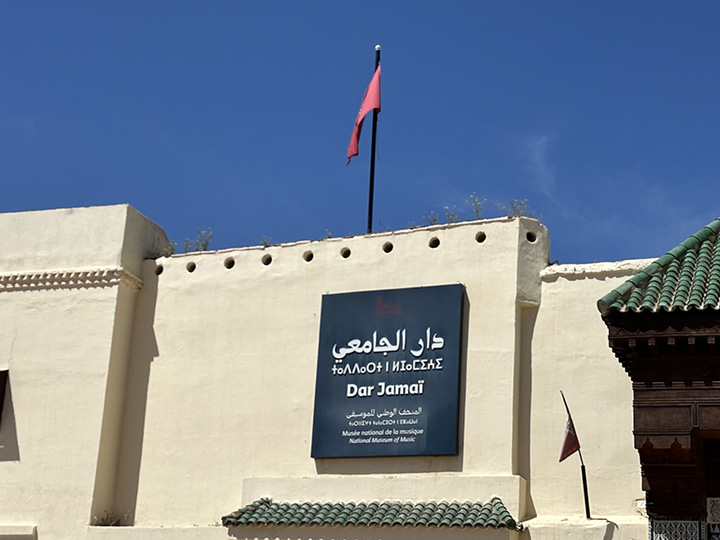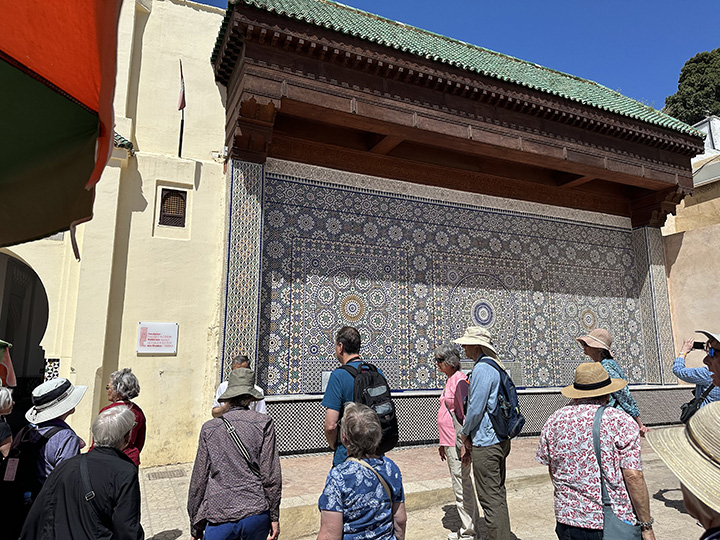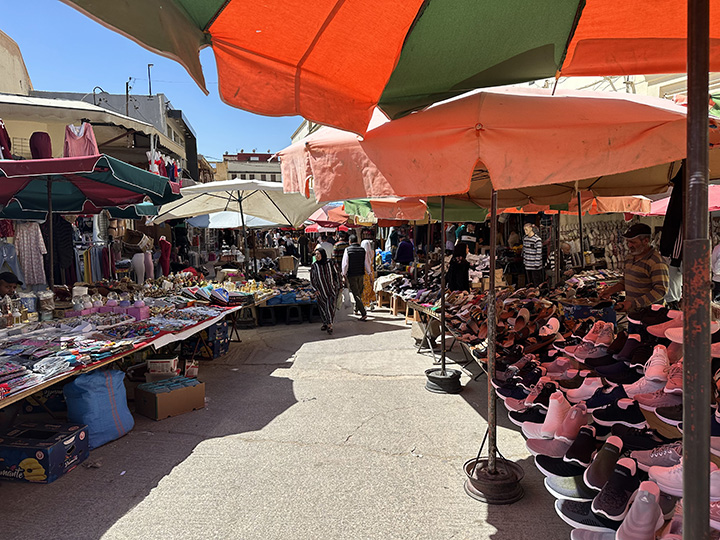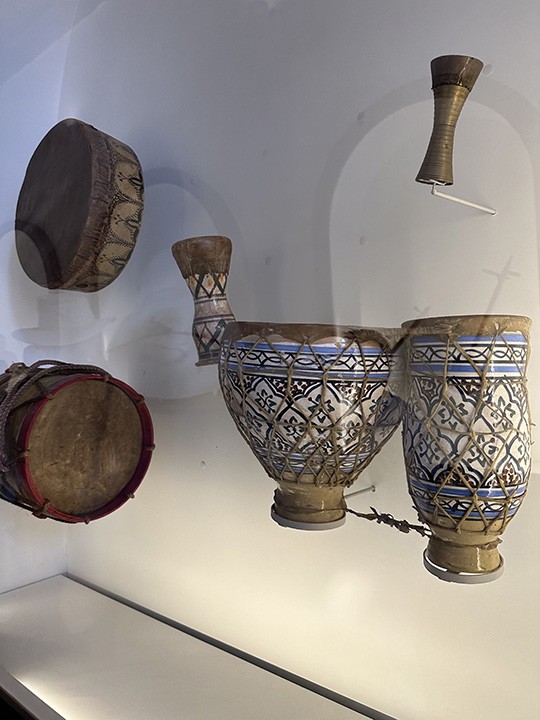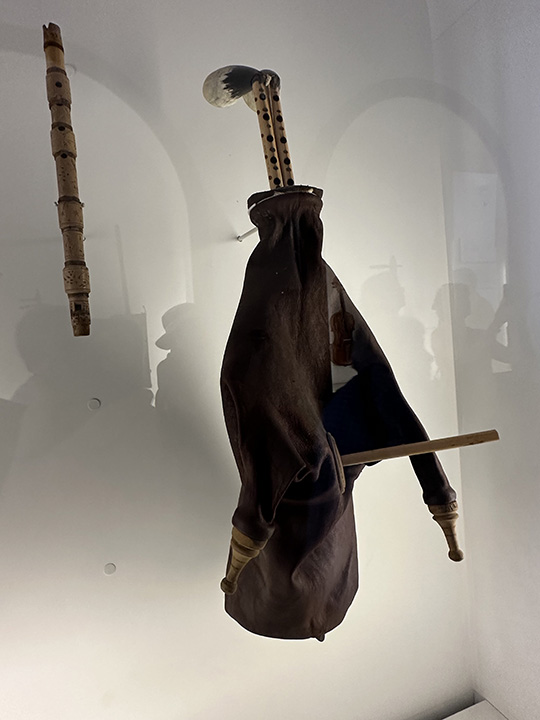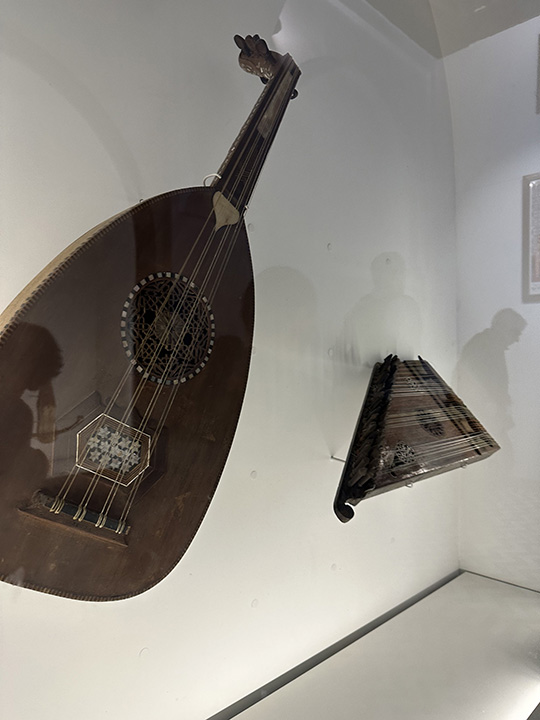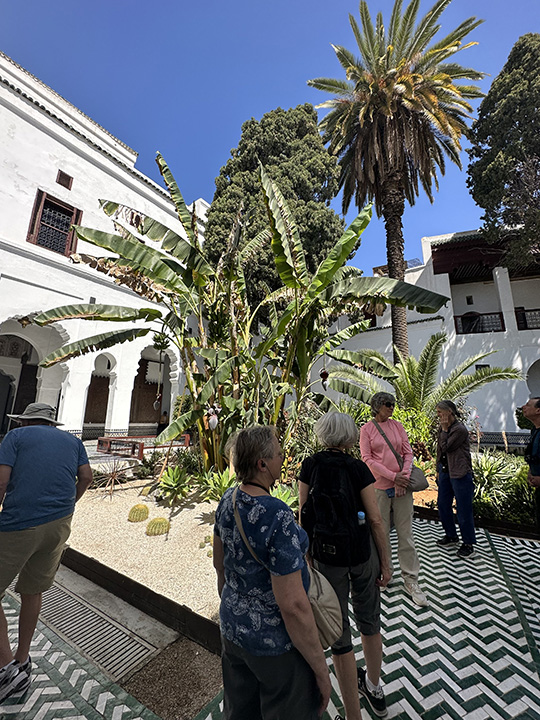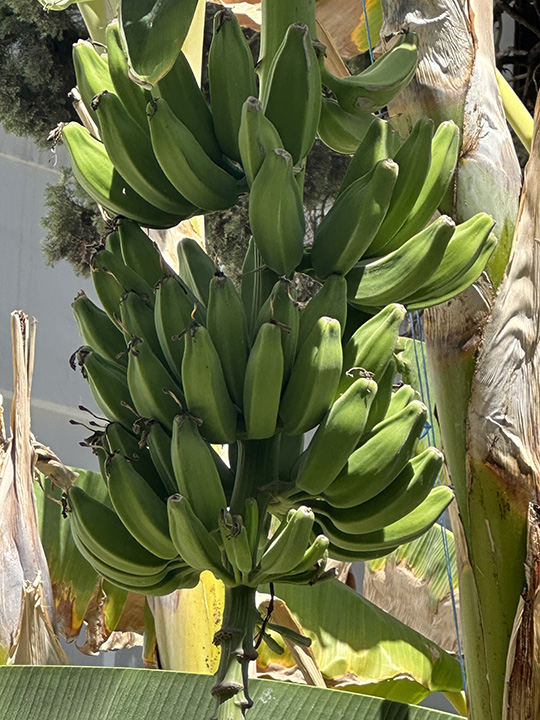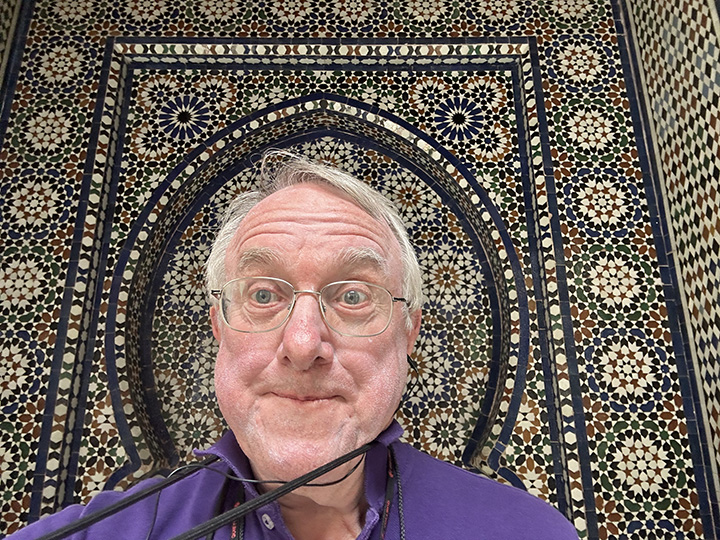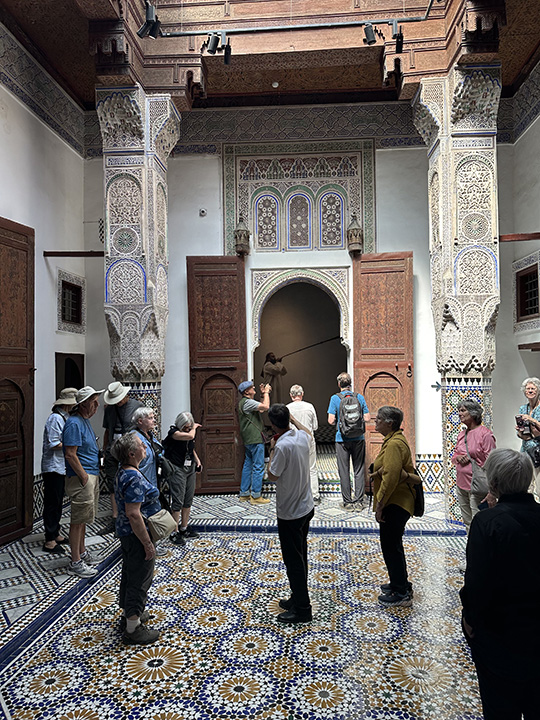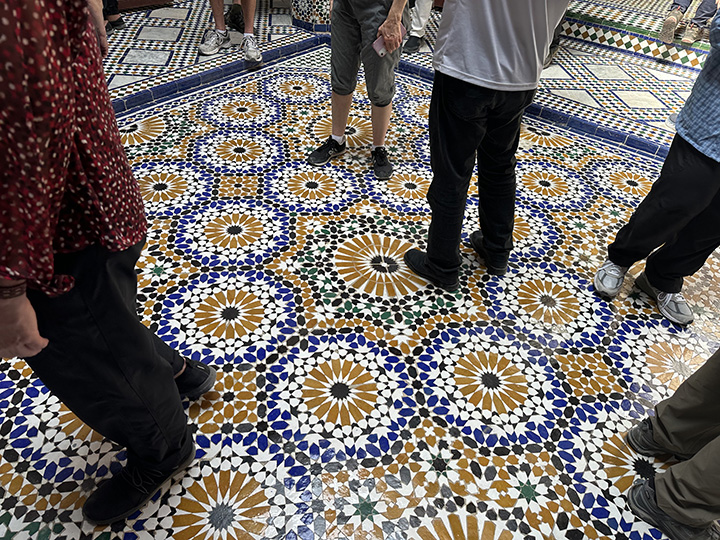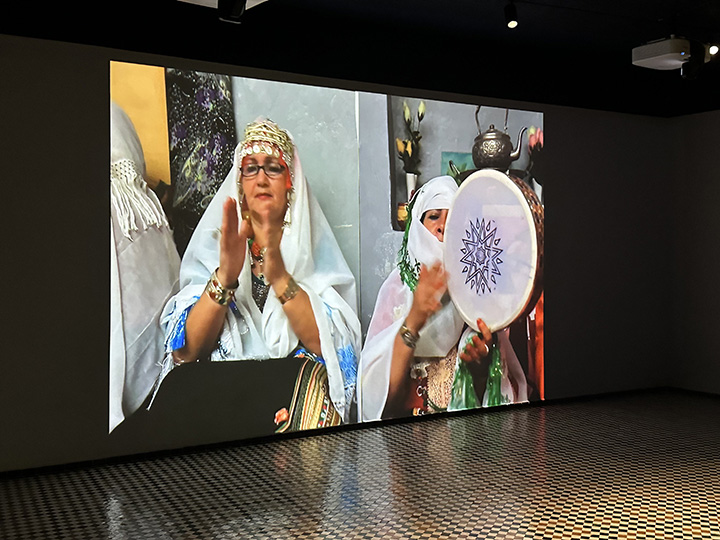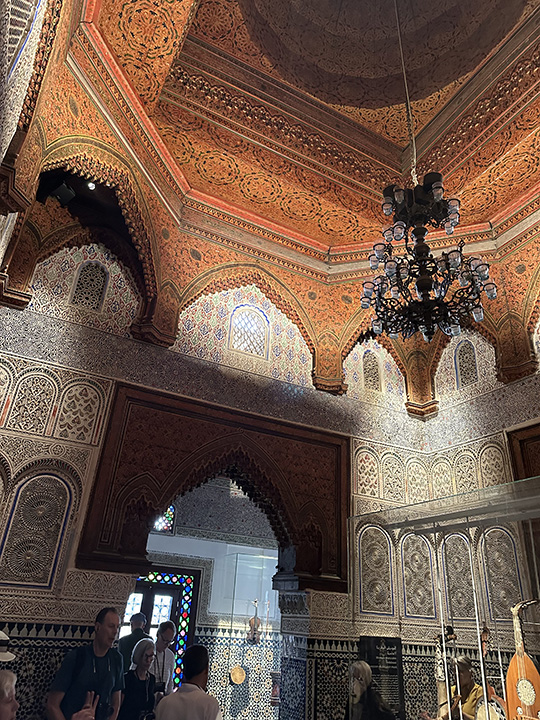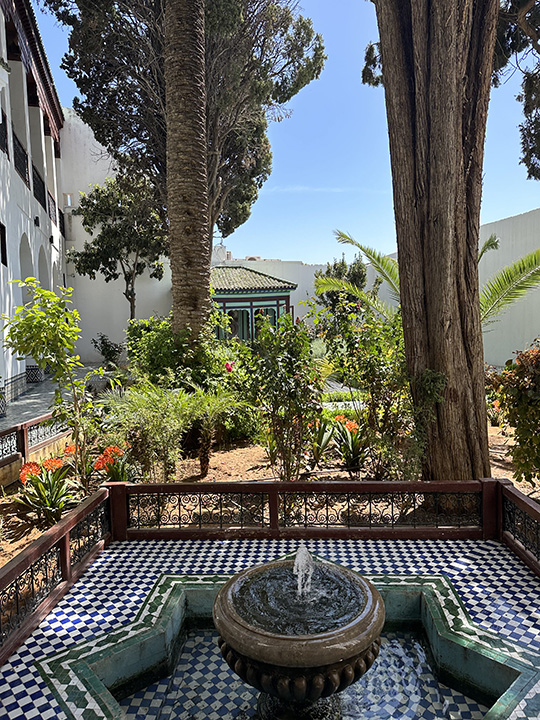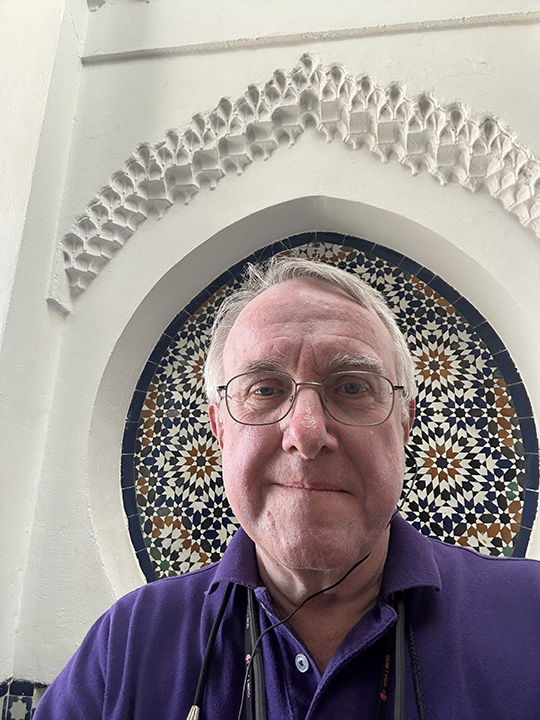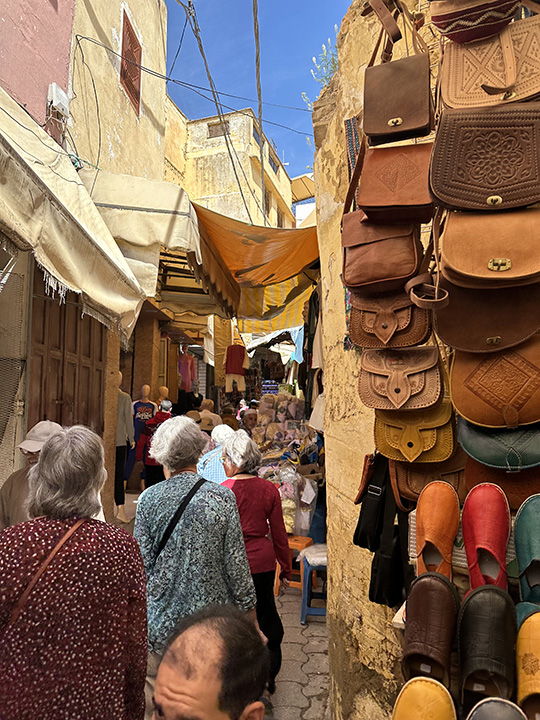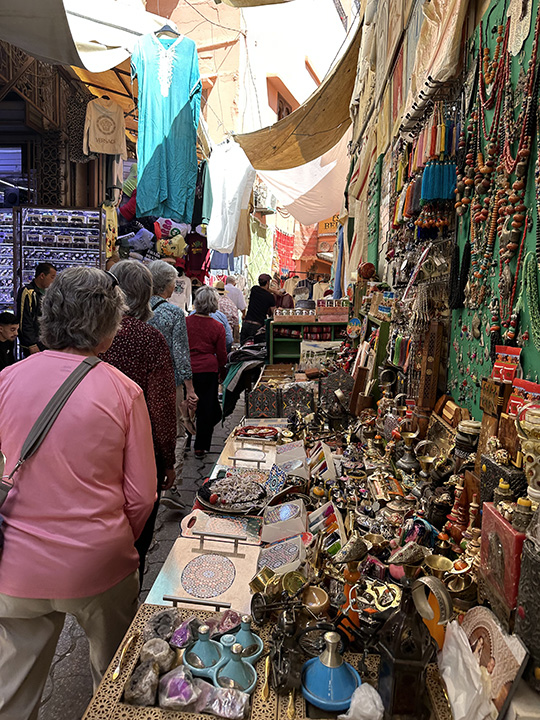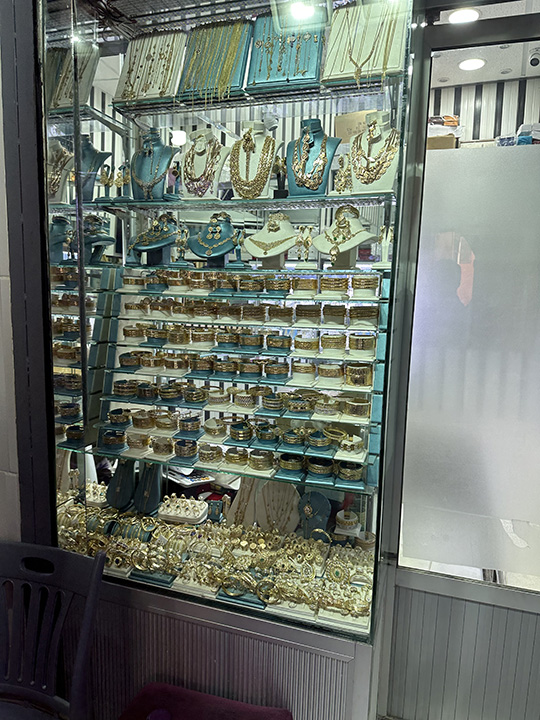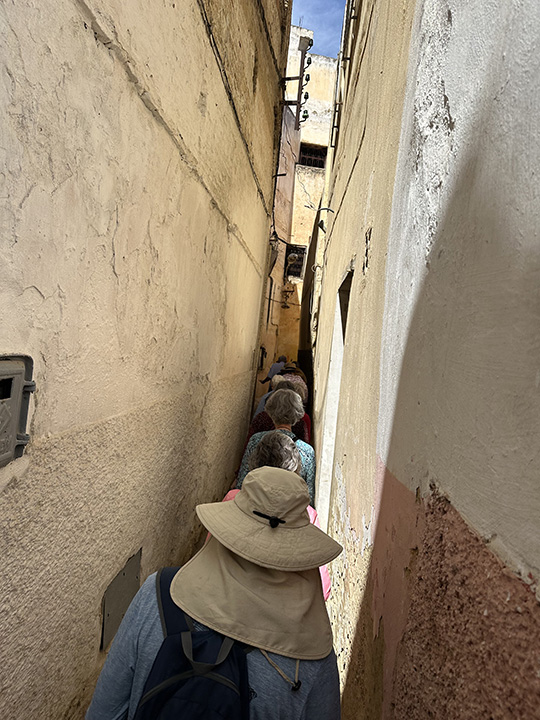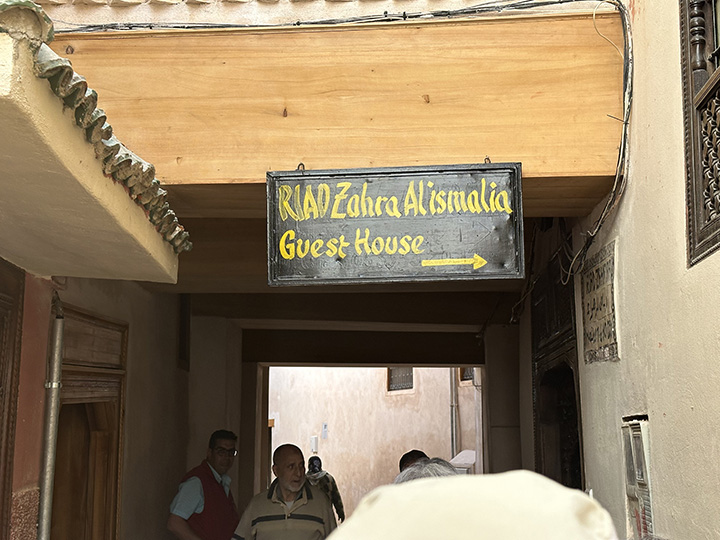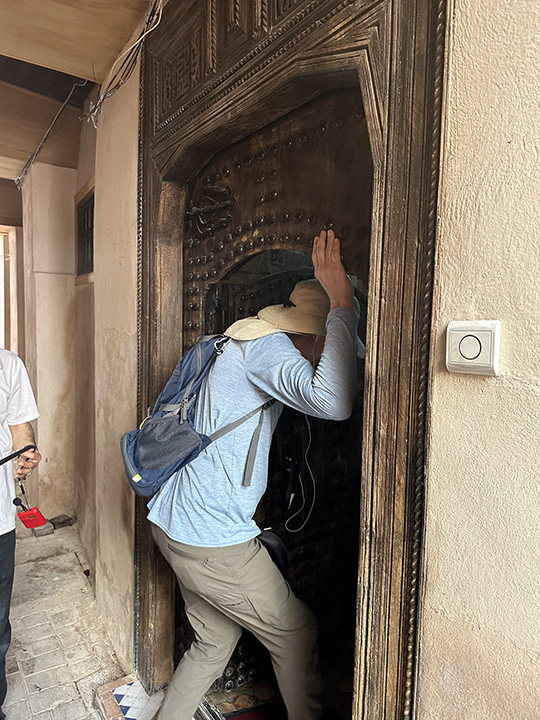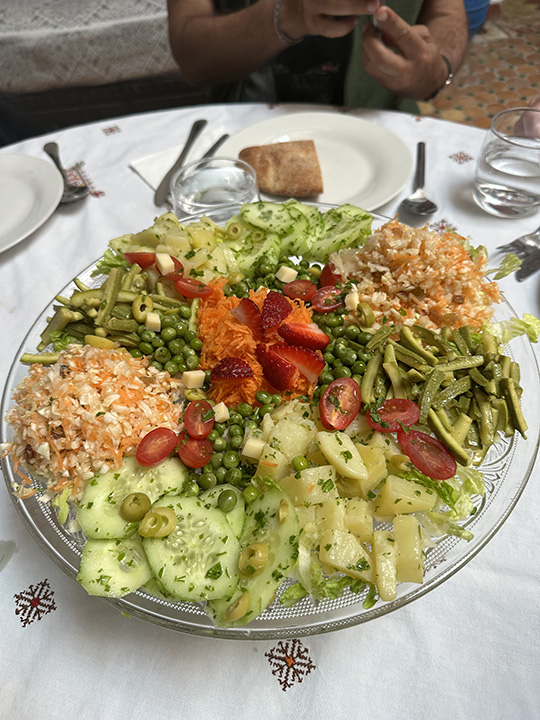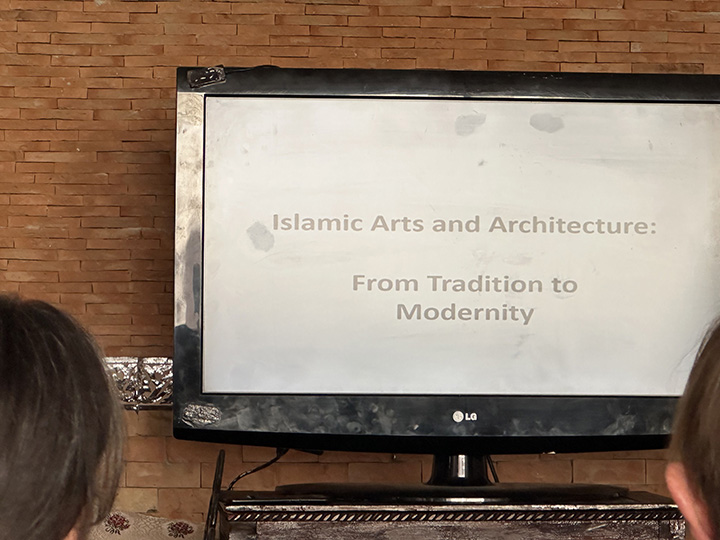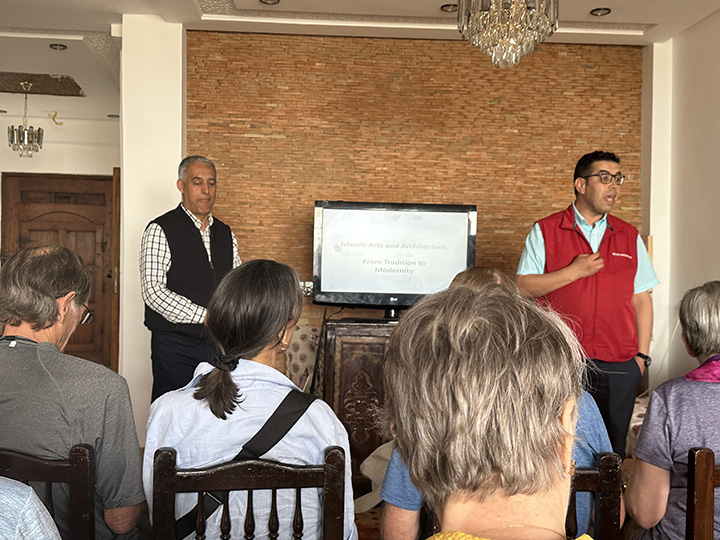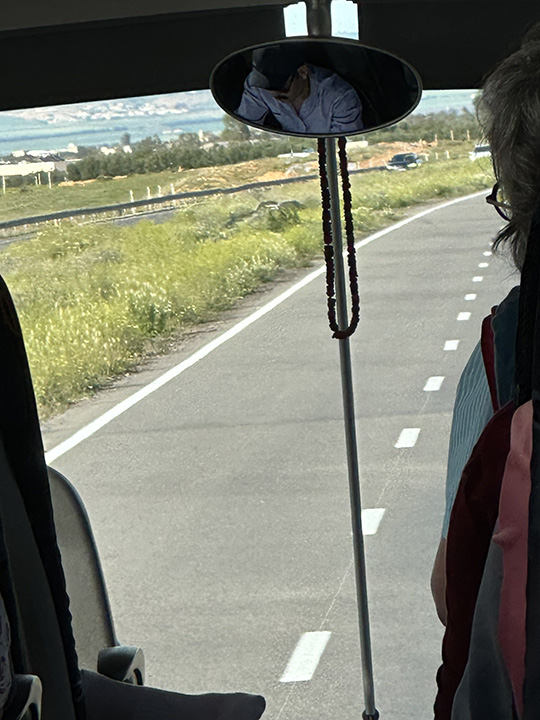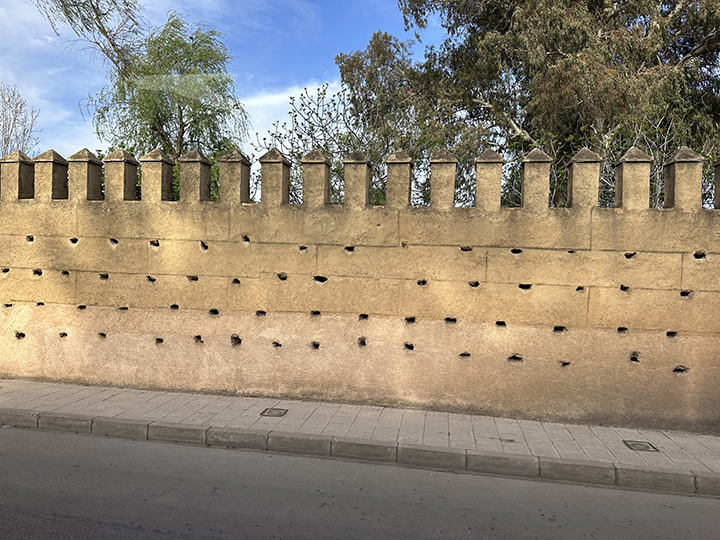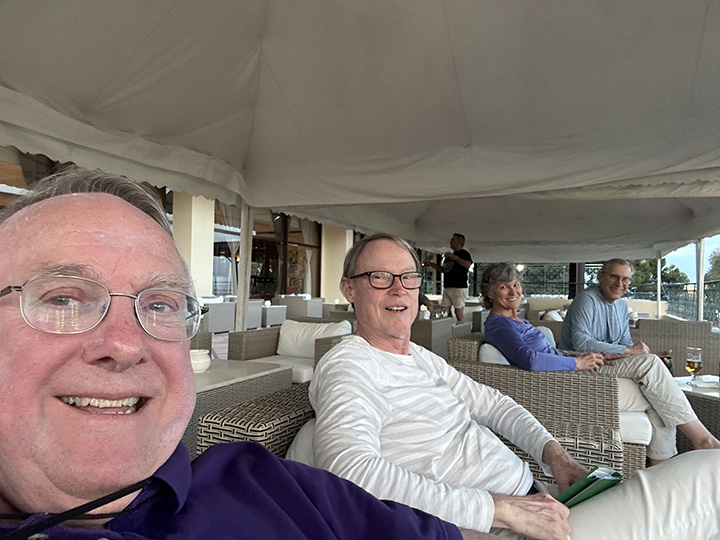|
Today we took a field trip from the hotel. We rode in the bus to the ruins of the Roman city of Volubilis and then we visited the historic city of Meknes.
Before they hit the road, the Road Scholars take advantage of the hotelís omelet bar.
And one of the first things they spot on the road is this strange palm tree. Somebody is trying to hide something.
Morocco continues to impress with its miles and miles of fertile farmland. These are olive trees.
Lots of 'em.
And those are sheep. Plus a few goats, I think.
The lush green fields won't last forever on this trip.
But they are lovely while they last.
A stork has built a nest on top of that pole. I keep trying to get a picture of a stork nest with a stork in it, but Iím just not fast enough so far. Look out for Mr. Stork, that persevering chap, heíll come along and drop a bundle in your lap.
There's one!
It's turned a little foggy this morning.
Well that didn't last long.
Agave plants are abundant here but they donít use them to produce tequila. In fact, Iím not really sure what they use them for if anything. I need to ask.
Volubilis is a partly-excavated Berber-Roman city in Morocco situated near the city of Meknes that may have been the capital of the Kingdom of Mauretania.
It's currently undergoing renovation. But I think they're never going to restore its former glory.
Built in a fertile agricultural area, it developed from the 3rd century BC onward as a Berber, then proto-Carthaginian, settlement before being the capital of the kingdom of Mauretania. It grew rapidly under Roman rule from the 1st century AD onward and expanded to cover about 100 acres with a 1.6 mi circuit of walls
Bill is impressed and he's glad he's here, but he's seen better Roman ruins before.
The city gained a number of major public buildings in the 2nd century, including a basilica, temple and triumphal arch.
Its prosperity, which was derived principally from olive growing, prompted the construction of many fine town-houses with large mosaic floors.
There's a large mosaic floor now!
More detail.
Volubulis fell to local tribes around 285 and was never retaken by Rome because of its remoteness and indefensibility on the south-western border of the Roman Empire.
It's another mosaic!
Volubulis continued to be inhabited for at least another 700 years, first as a Latinized Christian community, then as an early Islamic settlement.
In the late 8th century it became the seat of Idris ibn Abdallah, the founder of the Idrisid dynasty of Morocco.
But there's not much left now.
Doesn't matter. The Road Scholars are exploring everywhere and having a great time.
There used to be a bakery here.
And here there was a seafood shop.
Bill is finding all the shops are closed.
But maybe we can visit a private dwelling. Hope Dionysos is home.
Nope, but his mosaic tile floor is still here.
Things are getting crowded at Dionysos' house.
Bill is thinking about going off the beaten path.
If anybody remembers what this was, please send Bill a note of explanation.
More mosaic!
Hi Sarah!
Hi Judy.
Hi Bill.
Well this should be an interesting mosaic.
It was so covered in dust I had to dump my entire water bottle on it to see detail. But yes, there it is, some guy riding a crocodile donkey backwards. Those ancient Volubulisians loved their little jokes.
I figured I'd just snap a picture of this inscription in Latin and when I get home I'll use Google Translate to figure out what it says. Here's what I came up with: Blind (something) son Sicilian Built bruise blow Municipal Omani man Mother in law Oh Ilsin Put Can you do better than that? Let me know, please.
The ruins remained substantially
intact until they were devastated by an earthquake in the mid-18th
century and subsequently looted by Moroccan rulers seeking stone for
building Meknes. It was not until the latter part of the 19th
century that the site was definitively identified as that of the
ancient city of Volubilis. During and after the period of French
rule over Morocco, about half of the site was excavated, revealing
many fine mosaics, and some of the more prominent public buildings
and high-status houses were restored or reconstructed. Today it is a
UNESCO World Heritage Site, listed for being "an exceptionally well
preserved example of a large Roman colonial town on the fringes of
the Empire".
A fine group of Road Scholars.
Bill thought this would be a dramatic picture so he went to a lot of trouble to pose for it and now that it's all over he just like a lost tourist.
Now we're headed to a modern city: Meknes. What makes it modern? They have Col. Sanders here.
Big Macs too.
Meknes is a city in northern Morocco.
Itís known for its imperial past, with remnants including Bab
Mansour, a huge gate with arches and mosaic tiling. The gate leads
into the former imperial city. The Mausoleum of Sultan Moulay Ismail,
who made the city his capital in the 17th century, has courtyards
and fountains. To the south, ruined Heri es-Souani is a vast
structure once used as stables and for food storage.
But we did visit Morocco's National Museum of Music.
It's right over here.
Next to the open air market.
We saw traditional percussion instruments.
A bagpipe. Yes, really, a bagpipe.
A Moroccan lute.
And a lovely courtyard.
With a banana tree!
The tourist is impressed.
The museum is lovely.
The tile floors are beautiful.
And we saw a video of Moroccan women singing.
Here's a sample of that video.
we admired the walls and ceilings of the museum.
Everything is covered in beautiful geometric designs. It is the Islamic way.
There are even stained glass windows.
And a fountain.
How many times will he take a selfie framed in the archway of a water fountain?
Exploring the alleyways. Need leather goods? No problem here.
How about some nice jewelry?
Gold, even.
Now the walls are really closing in.
It's finally time for lunch.
Watch your head.
Lunch looks healthy. Yummy, too.
Our post-lunch lecture on Islamic art and architecture was actually fascinating.
The guy on the left was our guest lecturer and he was really interesting I think. I kept nodding off and I really hate when that happens.
Back on the bus and headed for our hotel in Fez. The road was a four-lane divided highway, a privately owned toll road. Very nice: just like an interstate highway.
The holes provide relief to the Media wall in the summer heat when the masonry expands and contracts. I know I've already mentioned that -- this is just a reminder.
When we got back to the hotel, some of the road scholars sat on the veranda and enjoyed dinner with a view. Bill, Don, Anne and Tom.
This is the view they were enjoying. Road Scholar really knows how to pick the hotels.
|

